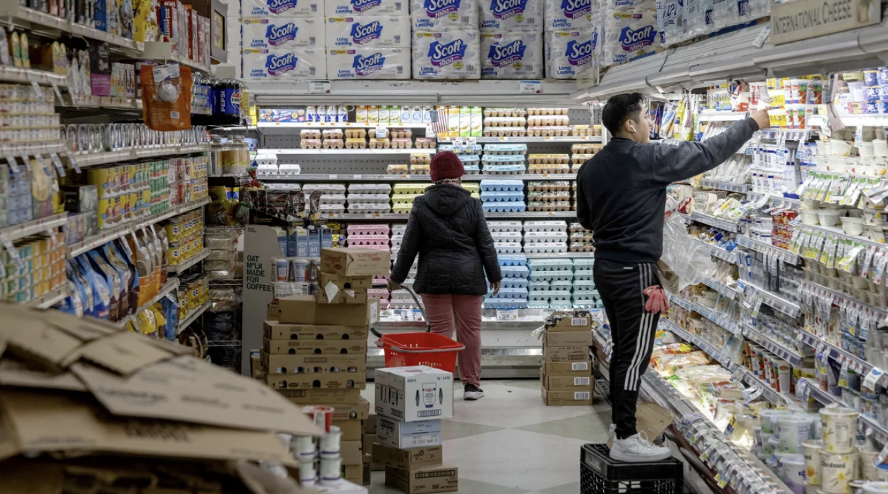
Consumer spending at US retailers last month fell short of expectations, raising concerns that American shoppers may be reaching their limits.
Retail sales increased by just 0.2% in February compared to the previous month, according to the Commerce Department’s report on Monday. This followed a downwardly revised 1.2% decline in January and was well below the 0.7% increase economists had predicted in a FactSet poll. The figures account for seasonal adjustments but not inflation.
Uncertainty fueled by former President Donald Trump’s fluctuating trade policies with key international partners has contributed to hesitation among both consumers and businesses. This cautious sentiment has been reflected in various consumer surveys, and now, shopping behaviors appear to be shifting in response. Retail sales make up roughly one-third of total consumer spending in the US.
The weak spending data adds to growing concerns that the US economy may be slowing down or even approaching a recession. Monday’s report did little to alleviate those fears.
The largest declines in spending last month were recorded at department stores (-1.7%), restaurants and bars (-1.5%), and gas stations (-1%). On the other hand, online sales and health store purchases saw gains, rising 2.4% and 1.7%, respectively.
However, the report wasn’t entirely negative. When excluding gas stations, car dealerships, building materials, and restaurants—known as the “control group”—retail spending rose by 1% in February on a monthly basis, fully recovering from the 1% decline in January. This was stronger than the 0.4% increase economists had expected.
“With sentiment so weak, investors had been hoping that the resilient US consumer would provide some reassurance about the economy,” said Jonathan Moyes, head of investment research at Wealth Club, in a statement on Monday. “That didn’t happen. With retail sales coming in lower than expected, the US consumer is starting to look a little fragile.”


